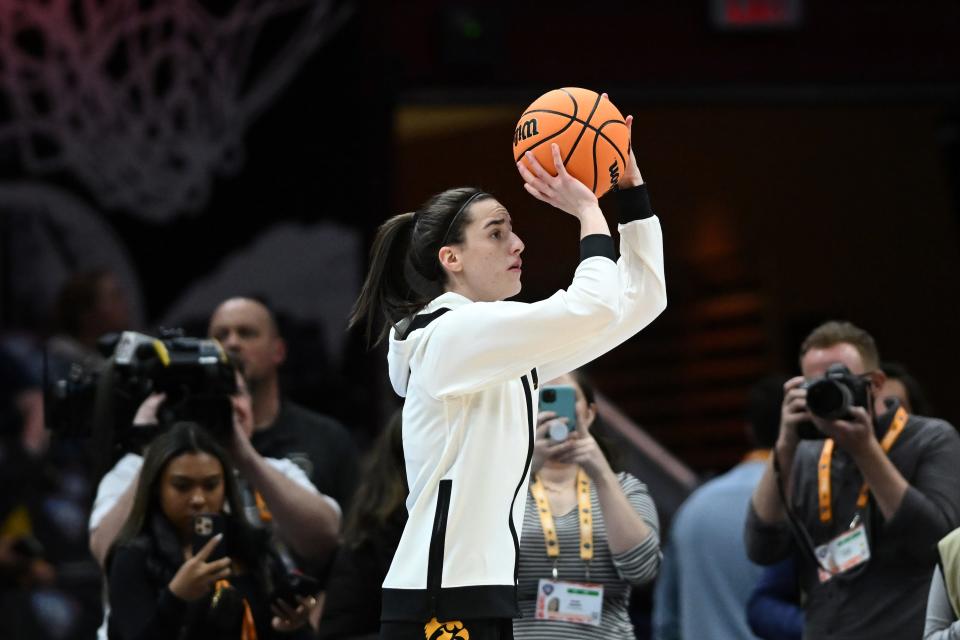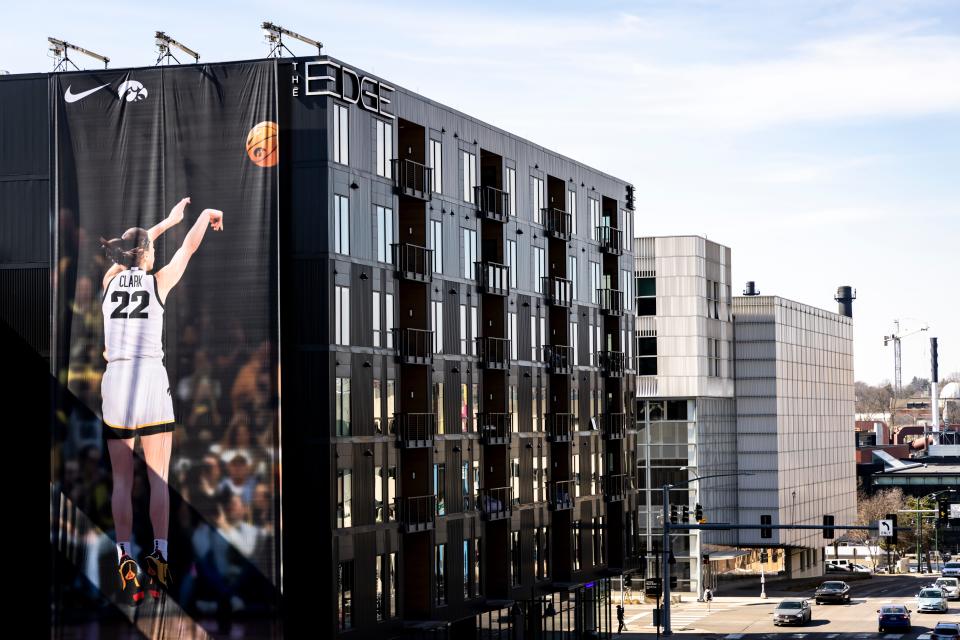Why this WNBA draft is a landmark moment (not just because of Caitlin Clark)
Editors' Note: USA TODAY has full coverage of Monday night's WNBA draft. Follow along with our live blog here for the latest updates, news and highlights.
Before Caitlin Clark captivated the nation this year in women’s basketball, Purdue University professor Cheryl Cooky never had bought season tickets before to any professional sports team in her life.
She lives in West Lafayette, Indiana, about 65 miles away from Indianapolis, home of the NFL Colts, the NBA Pacers and the WNBA Fever. But this time she couldn’t resist and paid about $2,500 for two seats with her husband.
"I drove down to Indy and bought season tickets to the Fever, and that is because of Caitlin Clark," Cooky said.
This is the new normal now for the WNBA – or so it hopes. Clark, the Iowa superstar, isn’t even a member of the Fever yet. But she likely will be Monday, when the 28-year-old WNBA will have itself a moment.

Some call it transformational
Others describe it as a landmark event. It’s this year’s WNBA draft, where Clark is expected to be selected No. 1 by the Fever.
But it’s not just Clark. There’s Angel Reese of LSU, another round of college stars coming up the pike and a big new marketing play about to be deployed, thanks to a $75 million investment in the league from 2022.
It’s why the league’s commissioner, Cathy Engelbert, has compared it to 1979, when superstars Larry Bird and Magic Johnson left college to join the NBA, supercharging a league that was such a bad product then that “we almost took the NBA off the air,” said former CBS Sports president Neal Pilson.
The WNBA has had its own rough times but is on the move. Last year’s WNBA Finals averaged 728,000 viewers on ESPN platforms, the most-watched WNBA Finals in 20 years and up 36% from 2022 – but still a whopping 18 million less than what Clark and Iowa drew when it lost to South Carolina in the college national championship game April 7.
"Is this our transformational moment − that this isn’t just a spike?" Engelbert said in an interview with USA TODAY Sports. "It’s the new normal. We’re going to embrace it. I think these players are going to embrace it, and I think that’s what happened back in the late 70s early 80s with the NBA."
Electricity and distribution
It was more than just two stars back then in the NBA. The rise of cable television also led to wider distribution of its product – on USA Network, ESPN, TBS and TNT. Then came another huge star – Michael Jordan in 1984, helping the league take off as a marketing tsunami and cultural staple.
Some see parallels there, too. Instead of cable, the WNBA is riding the rise of digital marketing, social media and major marketing deals for women such as Clark, whose spotlight is enlarged by sponsors Nike and State Farm insurance. For example, Nike already has put Clark on a giant billboard in Times Square in New York. State Farm plans to do the same come Monday.
By contrast, TikTok and Instagram weren’t around when Sheryl Swoopes, Sue Bird or Diana Taurasi entered the WNBA. If they were, they might have reached new fans and an audience that wasn’t restricted to the limits of legacy media.
"To get to people with short-form content rather than just long-form live games is another difference we have today that certainly in the women’s game we didn’t have when the league started and quite frankly 5-10 years ago," Engelbert said. "Now it’s huge."

There is reason to be skeptical
We’ve been here before, in some respects. In 1999, the U.S. women’s soccer team won the World Cup, triggering predictions of huge growth for women’s sports. Sue Bird and UConn finished 36-1 and won the national championship a year later, helping build a dynasty in college basketball. But the women’s game didn’t reach its predicted potential and instead seemed like a niche sport with occasional flashes in the pan.
Last year, the WNBA’s average attendance was only 6,615 per game, its highest in five years. Clark and Iowa, by comparison, averaged nearly 15,000 per game at home this past season and drew a record 55,646 for a game at Iowa’s football stadium last year.
Cooky, the Purdue professor, calls this current moment a “fork in the road.”
"I think that past behavior is sometimes the best predictor of future behavior," she said. "Hopefully this isn’t just kind of the next hot thing and then whatever corporate sponsors decide is gonna be what’s new and what’s fresh, they move on to that. I hope the investment is in fact an investment in the future and an investment in the league. The question of how we keep it going is important."
Engelbert has a plan for that.
What is the WNBA's plan?
In February 2022, the WNBA announced that investors had bought into the league with a $75 million investment, the largest-ever capital raise for a women’s sports property. Big names in sports and business put money in, including Nike, Micky and Nick Arison (owner and CEO of the NBA Miami Heat) and Laurene Powell Jobs, the billionaire founder and president of Emerson Collective. Proceeds of this investment were to be used for brand elevation and marketing.
"We raised that $75 million of capital in February 2022, which is preparing us for this moment not only through things like our global platform and expansion but being able to market," Engelbert said. "Marketing is what sport is all about. That’s what puts every athlete on the map is you find a brand who wants to market you. You have media coverage that markets you, and that’s what’s happened here with Caitlin and Angel and others. The product on the court is exceptional, but the business side I think is now ready for women in the team dimension. That’s what I think we were missing before because team sports it’s very hard to market around a whole team."
Why this WNBA moment is different
Individual stars make marketing it easier. So do rivalries, such as the budding one between Clark and Reese. But it’s not like the WNBA didn’t have stars before. It did.
It just didn’t have a megawatt star like Clark.
Or social media channels reaching wider and younger audiences.
Or a $75 million big bet from business before 2022.
Or a company like Nike that now has more skin in the game with both Clark and its equity stake in the league.
This season, 36 of the Fever’s 40 games will be on the league’s national broadcast and streaming partners, including eight times across ABC, ESPN and ESPN2. CBS will televise eight WNBA games, double its previous high. CBS on Wednesday also just announced a new multi-year deal with the WNBA.
South Carolina coach Dawn Staley made a prediction about it after her team beat Iowa this month.
"I want to personally thank Caitlin Clark for lifting up our sport," Staley told the postgame crowd in Cleveland. "She carried a heavy load for our sport. And it just is not gonna stop here on the collegiate tour. But when she is the No. 1 pick in the WNBA draft, she’s gonna lift that league up as well."
Follow reporter Brent Schrotenboer @Schrotenboer. Email: bschrotenb@usatoday.com
This article originally appeared on USA TODAY: WNBA draft is here: Why it's another landmark moment

